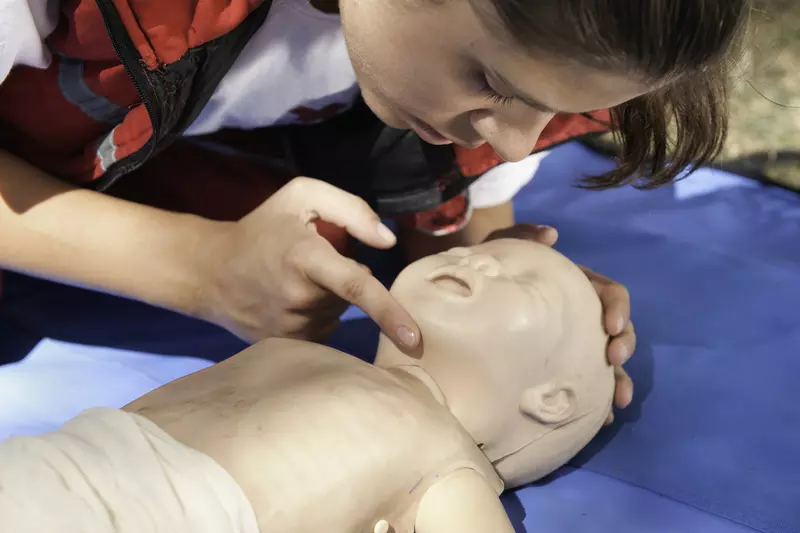- AdventHealth

If the unthinkable happens and your child cant breathe or their heart stops, every second matters. Instead of spending those seconds waiting for emergency responders to arrive, you can use them working to save your child.
Learning infant cardiopulmonary resuscitation, or CPR, can prepare you to give your child the best chance at recovering from an emergency, whether it be choking, drowning or a breathing problem like asthma.
Choking rescue is the most common emergency in children an adult will need to respond to, says Colleen Andrew, RN, who has taught an infant CPR class for more than a decade. Immediate action is needed, and usually its quite effective.
Performing CPR safely on an infant or child takes specialized, up-to-date knowledge. If its been many years or you only know how to perform CPR on an adult, now is a good time to learn.
Expectant parents are also encouraged to take this course near the beginning of Moms third trimester.
Take a class
Doing CPR correctly on infants and children is key, Andrew says. Without taking a class, you can injure a child and use techniques that we’ve learned are not helpful.
AdventHealth for Women holds infant and child CPR classes in four convenient locations: Altamonte, Celebration, Winter Park and Orlando. Click here to register for a class.
These single-session classes, held during convenient evening time slots for working parents, are taught by experts who use the latest evidence-based guidelines and are certified through the American Academy of Emergency Medicine.
Classes last for about two hours and cost $35 per person.
Children have unique needs
Though adults most commonly need CPR when their heart stops suddenly due to coronary artery disease, children more often need CPR because their breathing stops.
Children have a higher respiratory demand, meaning they breathe faster, so a child with asthma or near drowning might [be] at risk for cardiac arrest, Andrew says.
If a parent or caretaker can start CPR on an infant or child, first responders can take over when they arrive.
We want everybody to learn CPR, especially for children who sometimes just need a few compressions and breaths, she says.
Not just for parents
Though learning CPR is important for parents, they aren’t the only ones who can benefit.
Grandparents and other caretakers, like babysitters and older siblings, can also learn how to perform CPR. The American Heart Association has no minimum age for taking infant and child CPR classes.
Older, mature teens are welcome at AdventHealth’s CPR classes.
Keeping skills fresh
Hopefully, those who take an infant CPR class wont need to practice it in real life. But any skill that goes unused will be forgotten more easily. Andrew recommends that people who've taken the class practice on a stuffed animal or doll.
The American Heart Association's course completion cards are valid for two years, so its a good idea to take a refresher course if its been awhile. Plus, you may find that techniques have improved since your last class.
We perfect our techniques to improve survival rates, but we know that after a couple of months people forget them without practice, Andrew says.
The goal is simple: We want everyone to learn how to save a life.
For more information, or to register for a class, visit our website.



